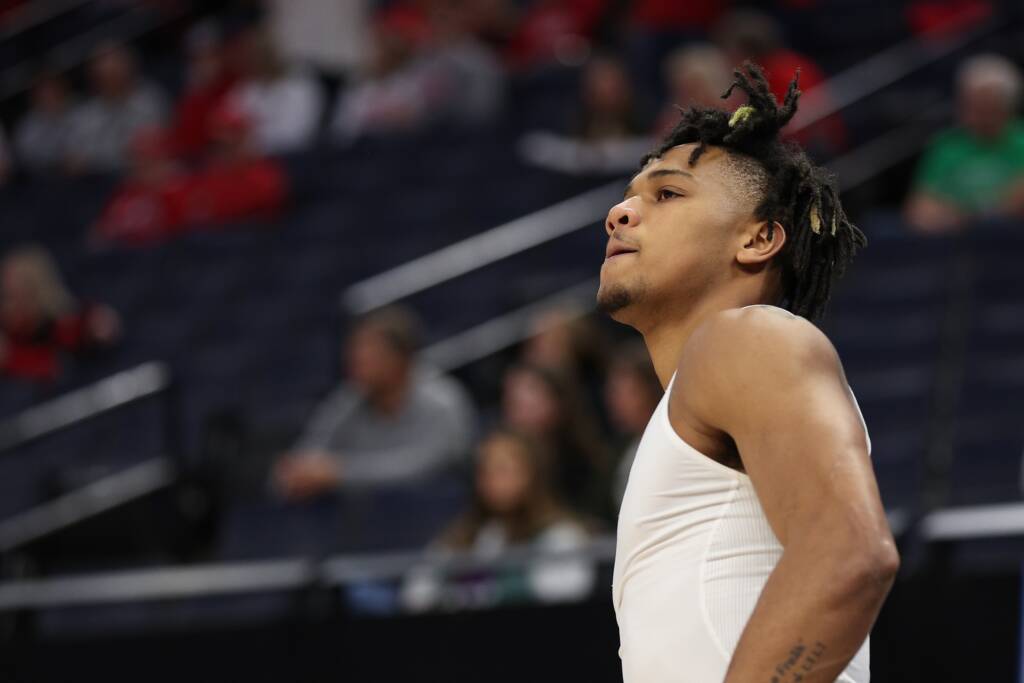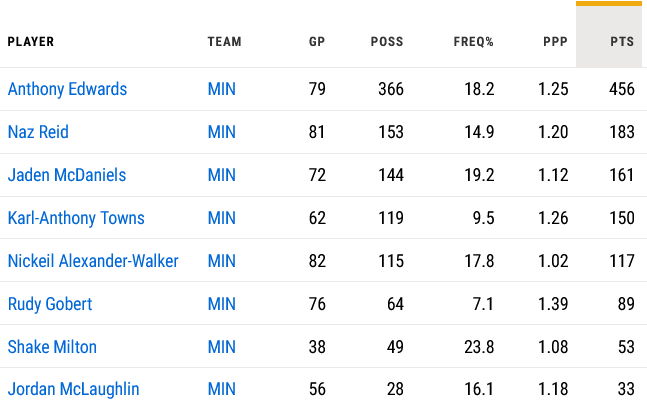Playing with pace and space has become increasingly important as basketball has been redefined in the 21st century. Therefore, having open optionality within an offense is vital, but getting out and running in advantageous court situations is always easier.
While NBA rules reward offense, consistently scoring in the half-court is still extremely difficult. That makes it even more important to score effectively in transition – something the Minnesota Timberwolves struggled to balance last season.
Minnesota’s lack of transition offense makes sense schematically. Starting two 7-footers, Rudy Gobert and Karl-Anthony Towns, naturally has downsides, and Anthony Edwards is Minnesota’s only reliable grab-and-go coast-to-coast option.
However, the Wolves added new reinforcements in the draft by taking Rob Dillingham and T.J. Shannon. While adding youth is always a great way to improve your pace and transition offense, Rob and T.J.’s unique skill sets offer more in transition than most young players.
Tim Connelly and Chris Finch stated that playing faster was a big improvement area they were targeting this off-season, as it continued to hinder their offensive success last season. The Wolves ranked:
- 29th in transition frequency
- 27th in transition possessions per game
- 24th in transition PPG
While Dillingham and Shannon showed flashes in Summer League, it’s more important to look back at their college years to better understand their abilities.
It’s all about his size and strength with Shannon. In his time at Illinois, his most effective possessions came when he could get the ball early on the move and be a bowling ball downhill toward the rim. His speed and explosiveness made him one of the best-known transition scorers in college basketball.
The most essential trait, though, is his fearlessness in traffic. He never shied away from contact, which helped him draw numerous fouls. He ranked fourth in all of Division I in free-throw attempts, attempting 8.6 free throws per game in his final season at Illinois.
Shannon, 23, was an older prospect, and his coaches gave him a lot of leeway at Illinois. However, he should be able to impact the game in transition, even as a role player. Hopefully, he finds the perfect balance between his roles at Texas Tech in his first three collegiate seasons and Illinois in his final two.
Quickness and flair are Dillingham’s strengths. Young and small guards always discover it’s difficult to find their scoring niche immediately. Therefore, maximizing transition opportunities remains important because the first step for most players is taking advantage of as many easy opportunities as possible.
Another former Kentucky guard, John Wall, highlighted this in his ESPN interview during the Wolves Summer League game against Indiana.
Dillingham’s facilitation brings more optionality, though. It keeps defenses guessing because players who create multiple routes to success are more likely to drive scoring. Rob was able to find his shot off the dribble and set the table for others in the open court, which will be an early spot to gain comfortability.
The thunder-and-lightning difference between Rob and T.J. will also allow the Wolves to play with more versatility, as players can build synergy. Numerous hypothetical archetype-based groupings can be manufactured. However, much of it will relate to the bench as the change-of-pace group for the Wolves roster.
Naz Reid has recently been Minnesota’s biggest change-of-pace player off the bench. While he routinely makes flashy plays in transition, there has been a lack of guard punch. Naz scored 186 points off the bench this season, second on the team. However, he trailed behind Anthony Edwards’ 456 points by a wide margin.
It’s clear where Dillingham and Shannon can implement their transition scoring impact. Nickeil Alexander-Walker was the only Timberwolves guard/wing not named Anthony Edwards to find any success scoring in transition.
Finding ways to limit those moments of stagnation will be the leading cause of the increase in transition frequency. That’s especially true, considering the Wolves once held a streak of 2.5 games played without a single fast-break point scored. Getting the ball in the hands of the youth will be important. Therefore, simultaneously giving them a platform to succeed while also giving important reps would be a win across the board for the Wolves.


